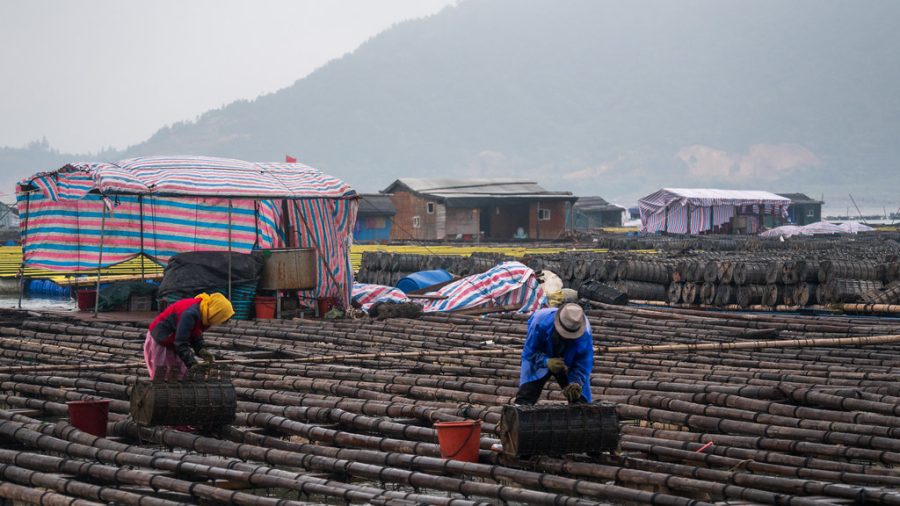Floating Farms
Source: Alex Berger
“The Floating Sea Farms of Xiapu” by virtualwayfarer is licensed under CC BY-NC 2.0.
Floating farms were designed to use remaining products made by the city, such as grass from public parks and food waste, to feed the animals and provide fresh products back to the city. Despite the issues caused by a changing climate, floating farms provide reliability, both in the amount of food available to feed rural populations and in the income of farming families. We now have a food source that helps produce fresh products.
Floating farms are great for our environment, but they can be very expensive and hard to take care of. The amount of technology that is used in this invention improves year by year meaning the cost of each piece of technology increases. Along with the pieces being expensive, floating farms acquire certain pieces that may throw off or affect the offshore ecosystem. Certain products may cause troubles such as rice seedlings can sometimes be the cause of the rapid growth of vegetables. On the other hand, floating farms have also helped many agricultural businesses when it’s flooding season by producing food during difficult weather times. Floating farms help improve energy and food production growth, overcome big cities, and help vulnerable communities adapt to the worsening impacts of global warming. It can also help protect the environment. Additionally, floating farms offer an alternative method by creating living spaces on the water. Floating farms can also provide nature preserves and good water quality. Alternatives based on nature, such as water bodies and floating farms, can provide a habitat for species like fish and mussels. Therefore, floating farms are a great resource for providing fresh products, a living to our environment, and helping fight climate change.
RELATED STORIES:
https://www.wired.com/story https://modernfarmer.com
https://next.blue/articles/floating-farms https://pmiind.com
TAKE ACTION:
https://www.farmfoundation.org/donate/















